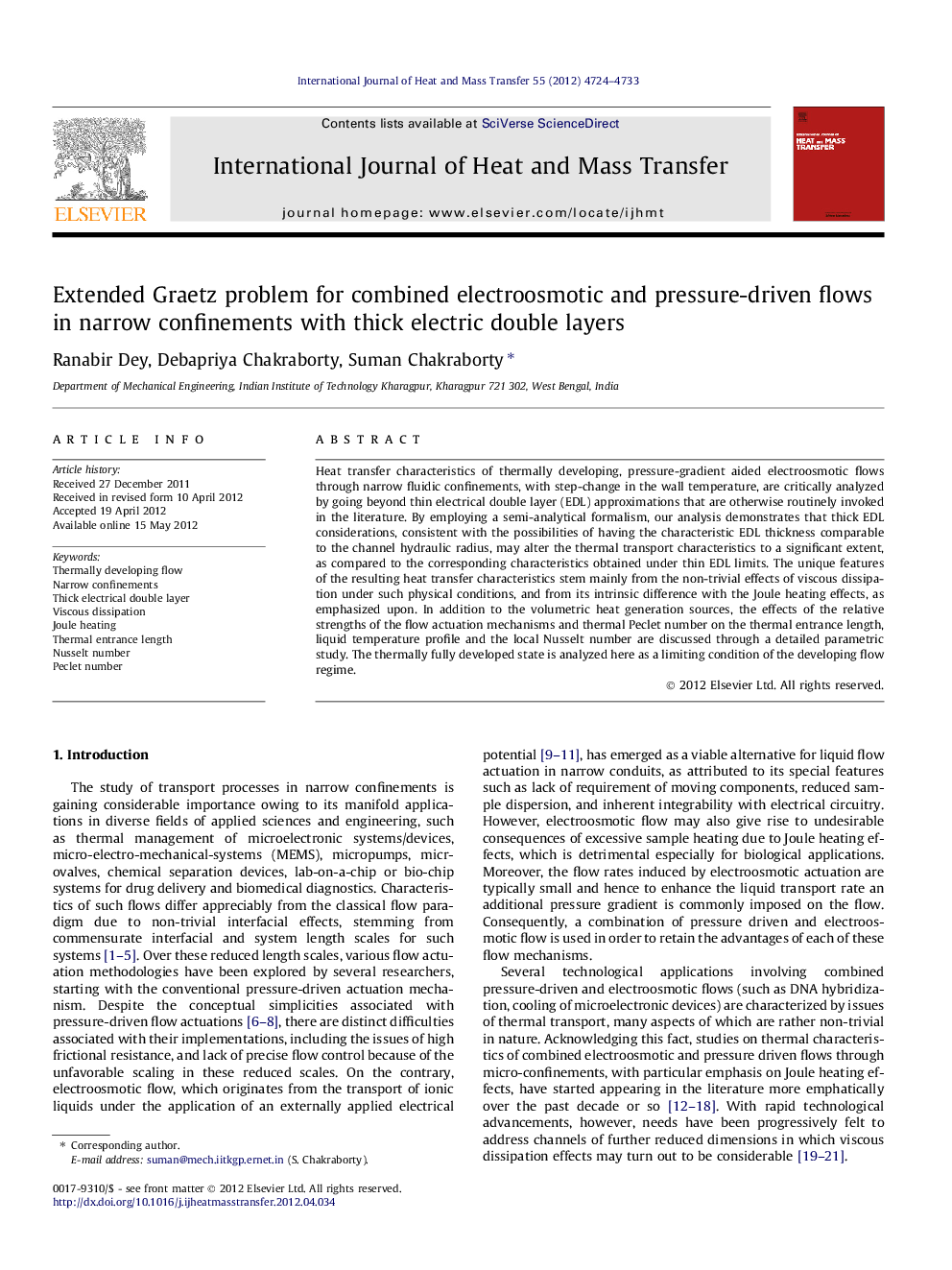| Article ID | Journal | Published Year | Pages | File Type |
|---|---|---|---|---|
| 659271 | International Journal of Heat and Mass Transfer | 2012 | 10 Pages |
Heat transfer characteristics of thermally developing, pressure-gradient aided electroosmotic flows through narrow fluidic confinements, with step-change in the wall temperature, are critically analyzed by going beyond thin electrical double layer (EDL) approximations that are otherwise routinely invoked in the literature. By employing a semi-analytical formalism, our analysis demonstrates that thick EDL considerations, consistent with the possibilities of having the characteristic EDL thickness comparable to the channel hydraulic radius, may alter the thermal transport characteristics to a significant extent, as compared to the corresponding characteristics obtained under thin EDL limits. The unique features of the resulting heat transfer characteristics stem mainly from the non-trivial effects of viscous dissipation under such physical conditions, and from its intrinsic difference with the Joule heating effects, as emphasized upon. In addition to the volumetric heat generation sources, the effects of the relative strengths of the flow actuation mechanisms and thermal Peclet number on the thermal entrance length, liquid temperature profile and the local Nusselt number are discussed through a detailed parametric study. The thermally fully developed state is analyzed here as a limiting condition of the developing flow regime.
